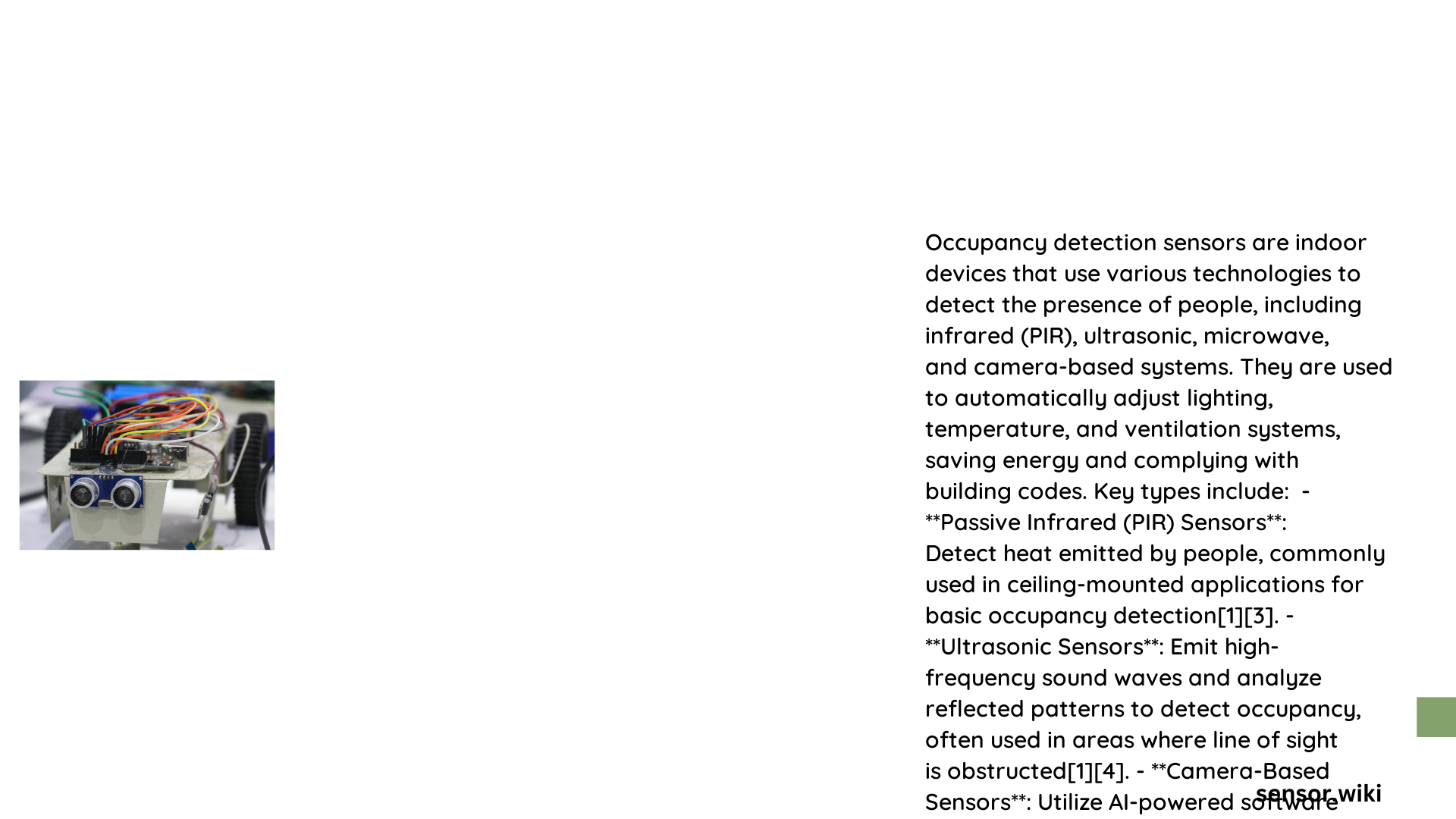Occupancy detection sensors represent cutting-edge technology designed to monitor and analyze human presence within indoor environments. These sophisticated devices utilize advanced sensing technologies like passive infrared (PIR), ultrasonic, and dual-technology mechanisms to accurately detect human movement, enabling intelligent building management, energy conservation, and automated control systems across commercial, industrial, and residential spaces.
What Are Occupancy Detection Sensors?
Occupancy detection sensors are intelligent electronic devices engineered to identify human presence within a specific spatial area through various sensing technologies. These sensors play a crucial role in:
- Automating lighting control
- Optimizing HVAC systems
- Enhancing building energy efficiency
- Implementing smart space management
How Do Different Sensor Technologies Work?
Passive Infrared (PIR) Sensors
| Technology | Detection Range | Power Consumption | Mounting Flexibility |
|---|---|---|---|
| PIR | 8-12 meters | Low (Battery/DC) | Ceiling/Wall Mount |
PIR sensors detect infrared radiation emitted by human bodies, triggering responses when temperature variations occur within their detection zone.
Ultrasonic Sensors
- Emit high-frequency sound waves
- Measure reflection patterns
- Detect subtle movements
- Ideal for complex environments with obstacles
What Factors Influence Sensor Performance?
Key performance determinants include:
- Detection Range
- Varies between 8-42 feet
- Depends on sensor technology
-
Influenced by mounting height
-
Power Requirements
- Battery-powered options
- Low-voltage DC configurations
-
Line voltage alternatives
-
Communication Protocols
- ZigBee
- LoRaWAN
- Bluetooth Mesh
- Wi-Fi integration
Where Can Occupancy Detection Sensors Be Implemented?
Potential application environments:
- Office spaces
- Conference rooms
- Educational institutions
- Healthcare facilities
- Retail environments
- Industrial complexes
- Smart homes
What Installation Considerations Exist?
Mounting Recommendations
- Optimal height: 10-50 feet
- Central room placement
- Unobstructed field of view
- Minimal interference sources
Wiring and Power Integration
- Direct electrical connection
- Wireless communication
- Battery replacement strategies
- Compatibility with building management systems
How to Select the Right Occupancy Detection Sensor?
Evaluation criteria:
– Detection accuracy
– Coverage area
– Power efficiency
– Communication protocol
– Environmental adaptability
– Cost-effectiveness
Technical Specifications to Consider
Performance Metrics
- Detection range
- Response time
- Sensitivity levels
- Temperature tolerance
- Mounting flexibility
Emerging Trends in Occupancy Detection
- AI-enhanced sensing
- Machine learning algorithms
- Edge computing integration
- Enhanced privacy features
- Multi-sensor fusion technologies
Conclusion

Occupancy detection sensors represent a transformative technology enabling intelligent, responsive building environments. By understanding their capabilities, installation requirements, and technological nuances, organizations can implement sophisticated, energy-efficient monitoring solutions.
